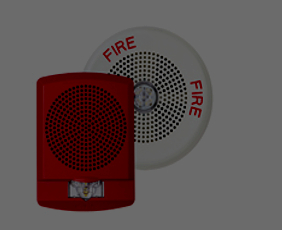Fire Detection Systems: Differentiate Smoke, Heat, CO2 and Gas Detectors
Fire detection systems play a critical role in safeguarding lives and property by alerting occupants to potential fire hazards. In this comprehensive guide, we’ll explore the differences between various types of fire detectors, including smoke detectors, heat detectors, CO2 detectors, and gas detectors. Each type serves a unique purpose and employs distinct technologies to detect different types of fire or hazardous conditions. By understanding how these detectors work and when to use them, you can make informed decisions to enhance fire safety measures in residential, commercial, and industrial settings.
1. Smoke Detectors:
How They Work: Smoke detectors utilize either ionization or photoelectric sensors to detect the presence of smoke particles in the air. When smoke particles enter the detection chamber, they disrupt the sensor’s operation, triggering the alarm.
When They’re Used: Smoke detectors are ideal for detecting smoldering fires characterized by the presence of smoke before the flames become visible. They are commonly installed in residential, commercial, and industrial settings, including bedrooms, hallways, and kitchens.
2. Heat Detectors:
How They Work: Heat detectors are designed to activate when the surrounding temperature exceeds a predefined threshold. They do not respond to smoke particles but instead rely on heat-sensitive elements to initiate the alarm.
When They’re Used: Heat detectors are suitable for environments where smoke detectors may not be practical, such as areas with high levels of dust, steam, or fumes. They are commonly installed in kitchens, garages, and mechanical rooms.
3. CO2 Detectors:
How They Work: CO2 detectors monitor levels of carbon dioxide in the air, signaling potential combustion or ventilation issues. They may utilize electrochemical sensors or infrared technology to detect CO2 levels.
When They’re Used: CO2 detectors are essential for spaces where the buildup of carbon dioxide can pose health risks or indicate the presence of a fire. They’re often installed in enclosed areas, laboratories, and industrial settings.
4. Gas Detectors:
How They Work: Gas detectors are designed to detect the presence of specific gases, such as methane, propane, or natural gas, which can indicate a potential fire or hazardous leak. They utilize sensors tailored to detect particular gases.
When They’re Used: Gas detectors are critical for environments where the presence of combustible or toxic gases poses a threat. They’re commonly deployed in residential kitchens, industrial facilities, and laboratories.
5. Comparison Table:
| Parameters | Smoke Detectors | Heat Detectors | CO2 Detectors | Gas Detectors |
| Detection Method | Ionization/Photoelectric | Rate-of-Rise/Fixed Temperature | Carbon Dioxide Levels | Combustible/Toxic Gas Presence |
| Applications | Residential, Commercial, Industrial | Varied | Confined Spaces, Laboratories | Industrial, Manufacturing |
| Sensitivity | High Sensitivity to Smoke Particles | High Sensitivity to Temperature Changes | Detects Specific CO2 Levels | Detects Specific Gas Concentrations |
| Environmental Factors | Prone to False Alarms (e.g., Cooking Smoke) | Resistant to Environmental Factors | N/A | N/A |
| Maintenance Needs | Regular Cleaning and Testing | Minimal Maintenance | Periodic Calibration | Calibration and Sensor Replacement |
Conclusion:
Understanding the differences between smoke detectors, heat detectors, CO2 detectors, and gas detectors is essential for designing effective fire detection systems tailored to specific environments and hazards. Each type of detector has its unique strengths and limitations, making it crucial to evaluate the requirements of your space and choose the appropriate detectors accordingly. By implementing a comprehensive fire detection strategy, you can mitigate the risk of fire-related incidents and protect lives and property.
CTA:
Ensure your property’s safety with our cutting-edge fire detection solutions. Contact us today to learn more about our products and services.

